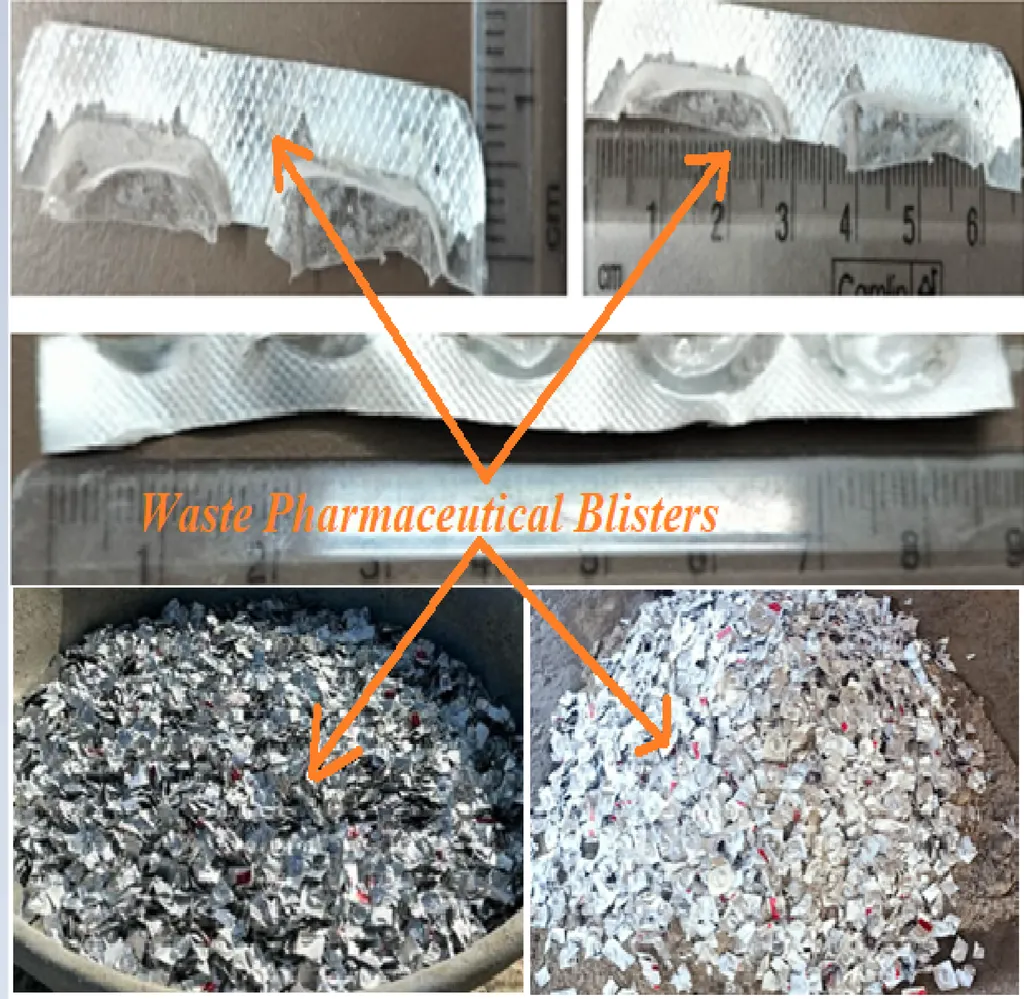In a groundbreaking study published in the journal *Scientific Reports* (translated to English as “Scientific Reports”), researchers have uncovered a promising solution for managing waste pharmaceutical blister packaging by incorporating it into concrete, potentially revolutionizing waste management and sustainability practices in the construction industry. The research, led by Rohan Kumar Choudhary from the Department of Civil Engineering at the National Institute of Technology Jamshedpur, explores the feasibility of using waste pharmaceutical blisters (WPBs) in M30 concrete, offering a sustainable alternative for waste utilization.
The study addresses a pressing global issue: the increasing volume of plastic waste, particularly from pharmaceutical blister packaging, which has surged due to the COVID-19 pandemic. Traditional recycling methods for WPBs are challenging due to their composition of plastic-aluminum laminates. However, Choudhary’s research demonstrates that incorporating WPBs into concrete can provide a viable solution.
“Our findings indicate that waste pharmaceutical blisters can be effectively utilized in low-strength concrete, contributing to circular economy and decarbonization goals in the construction sector,” Choudhary explained. The research developed two mix categories: direct addition of WPB (0–30% by weight of sand) and partial replacement of sand with WPB (5–30%). Compressive strength tests identified 20% substitution as optimal, with mixes achieving 92–95% of control strength.
Non-destructive evaluation using the Schmidt Rebound Hammer validated these results, while water absorption analysis revealed that partial sand replacement provided better resistance compared to direct addition. Scanning Electron Microscopy (SEM) and X-ray Diffraction (XRD) analyses of the optimum mix after 90 days confirmed well-developed hydration products and strong interfacial bonding between WPB fibers and the cementitious matrix.
The implications of this research are significant for the construction industry, particularly in the context of sustainability and waste management. By repurposing WPBs, construction companies can reduce their environmental footprint while also managing a growing waste stream. This innovation could lead to the development of new construction materials that are both sustainable and cost-effective.
“Future studies should investigate durability under aggressive environments, behavior at elevated temperatures, and flexural performance, along with advanced microstructural characterization to better understand interfacial transition zones,” Choudhary suggested. These further investigations could pave the way for even broader applications of WPBs in construction, enhancing the industry’s commitment to sustainability and circular economy principles.
As the construction sector continues to seek innovative solutions for waste management and decarbonization, this research offers a promising path forward. By transforming waste pharmaceutical blisters into sustainable concrete, the industry can make significant strides towards a more sustainable future.

